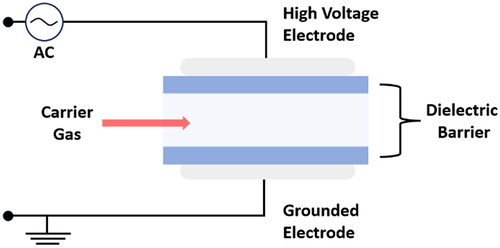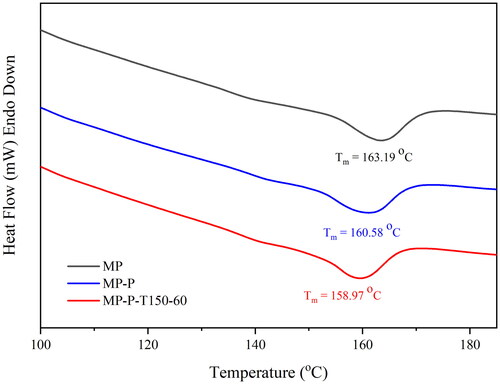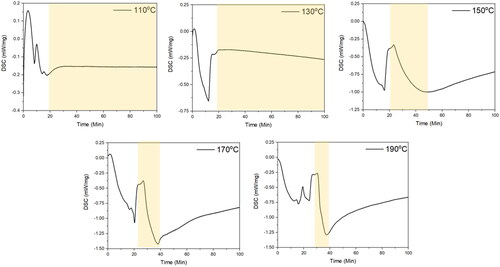Figures & data
Table 1. Sample treatment and code names for MP and PMB, where ‘xxx’and ‘yy’ represent the temperature and duration, respectively, of the thermal oxidation treatment.
Figure 2. (a) Schematic of the contact angle measurement of MP samples. The effects of thermal oxidation treatment duration on the critical surface tension of MP (b) and the contact angles of (c) DW and (d) EG.
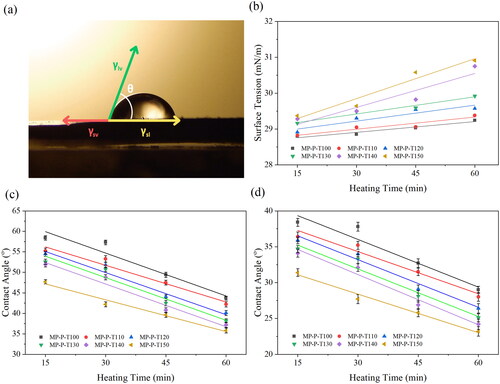
Figure 4. Schematic of the chain-scission and oxidation reaction resulting in the formation of LMWOM and a boundary layer on the surface of the polymer.
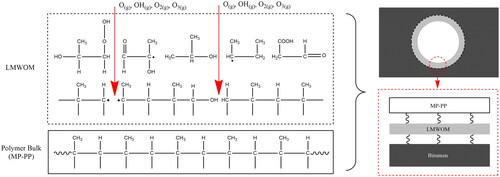
Figure 7. Micrographs of (a) PMB–MP, (b) PMB–MP-P, and (c) PMB–MP-P–T150–60 mixtures; particle size analysis and distribution for (d) PMB–MP, (e) PMB–MP-P, and (f) PMB–MP-P–T150–60 mixtures.
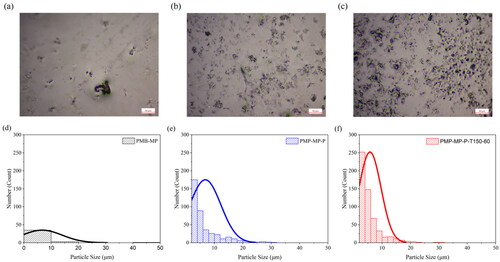
Table 2. Average particle size for the designated PMB mixtures.
Data availability statement
The data that support the findings in this investigation can be made available from the corresponding author upon reasonable request.

